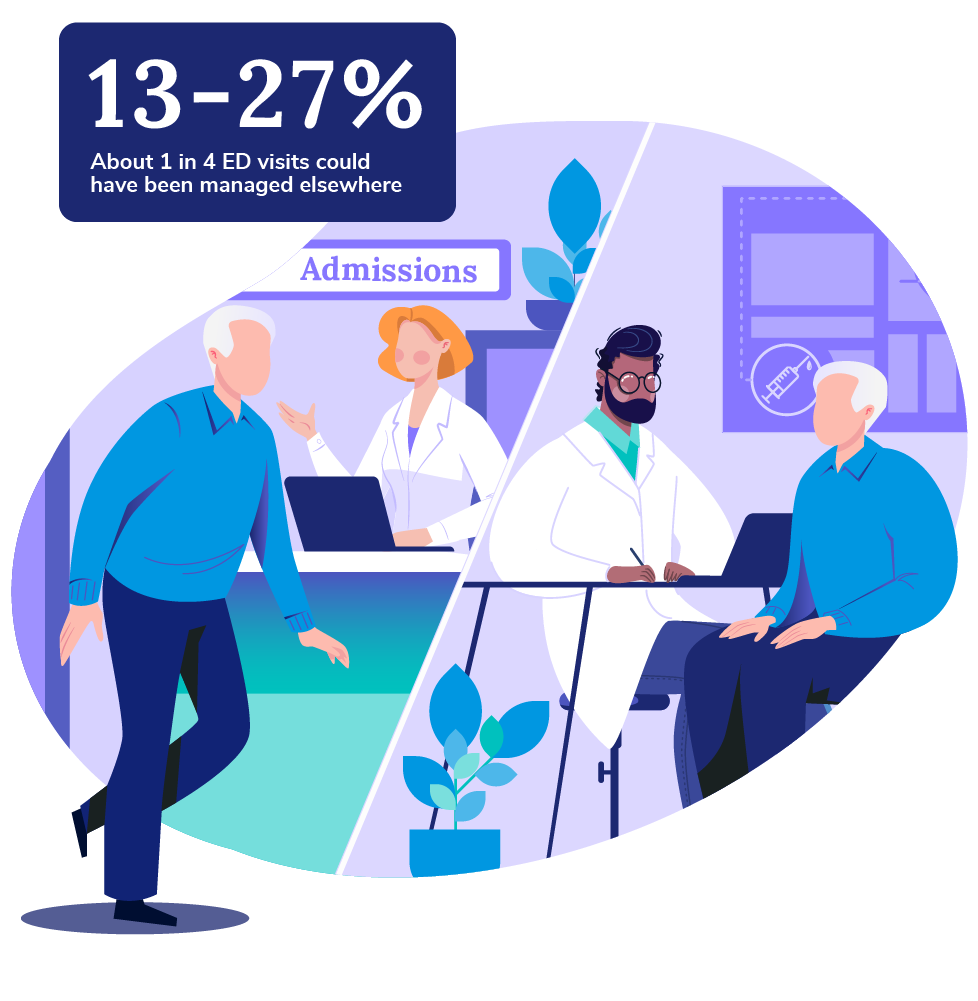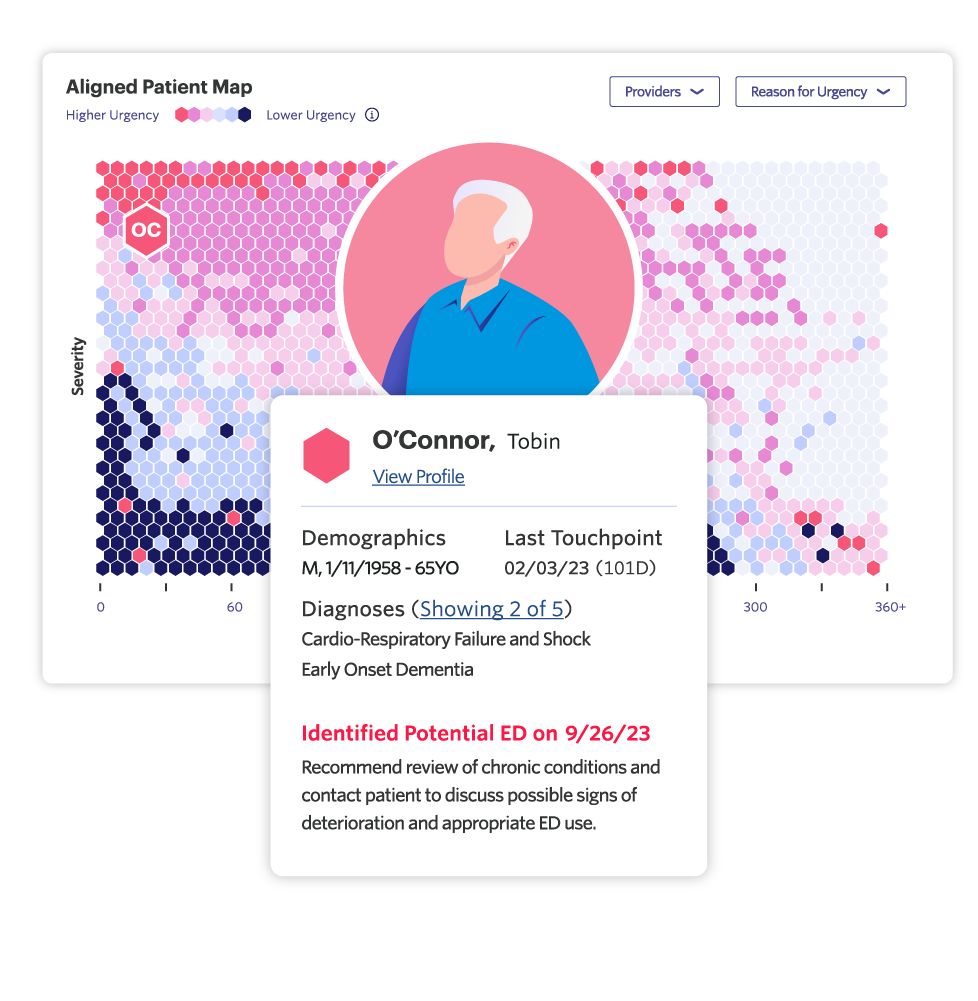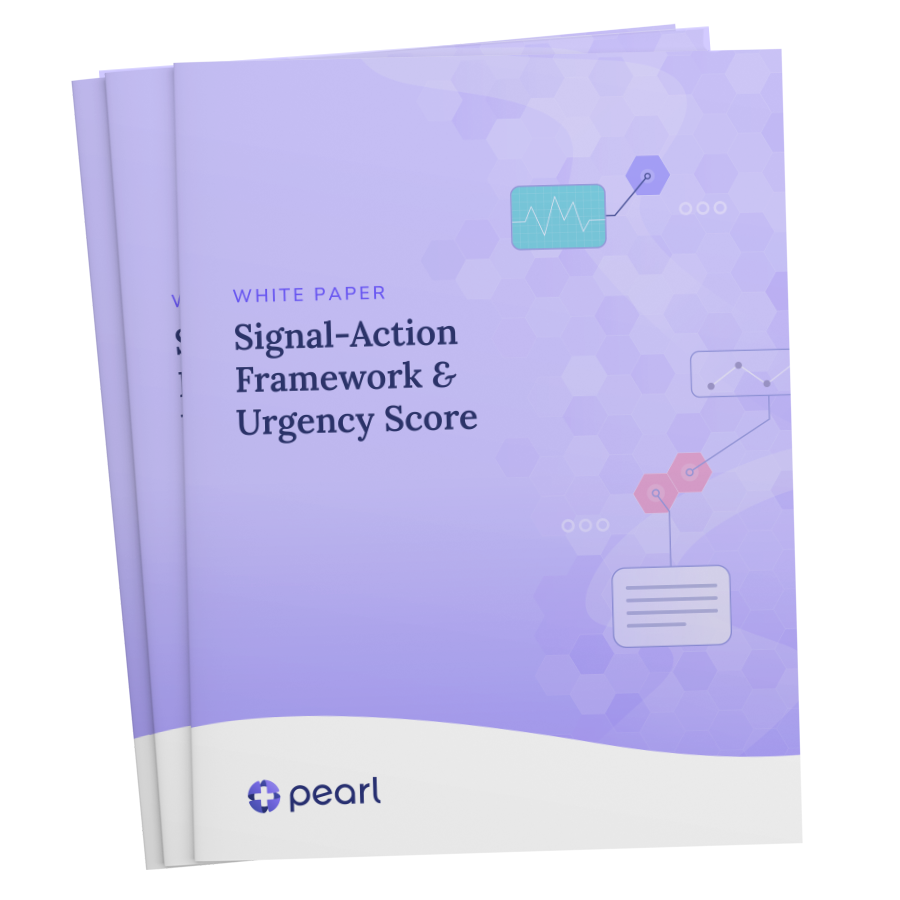Emergency department (ED) visits can be a costly and disruptive experience for patients, families, and the healthcare system at large. Research indicates that 13–27% of ED visits in the U.S. could be managed in outpatient settings like physician offices, clinics, or urgent care centers.1 These preventable ED visits often result from factors such as deteriorating chronic conditions and gaps in patient education.

For primary care providers (PCPs), identifying which patients are at risk of a preventable ED visit can be a challenge, particularly when managing large patient panels. That’s why Pearl has developed a new urgency reason alert, Potential Future ED Visit, to support proactive, targeted care.2
Why This Approach Matters
Preventable ED visits can fragment care, burden the healthcare system, and expose patients to unnecessary stress.3 With timely interventions, however, these visits may be avoided, ensuring patients receive care in the appropriate setting. The key is to effectively identify patients at elevated risk for preventable ED visits and provide PCPs with the tools and insights they need to intervene proactively.
Pearl’s predictive analytics and clinical decision-support tools help identify patients at high risk for preventable ED visits by analyzing historical data and patient patterns. These insights allow PCPs to identify and proactively intervene with personalized care plans, addressing health concerns before they escalate. By prioritizing high-risk patients, our platform aims to advance value-based care and enable more efficient, patient-centered healthcare delivery.
Pearl's Data-Driven Strategy
Our Data Science team has leveraged historical patient data to develop a predictive model identifying individuals most at risk for a near-term preventable ED visit. After rigorous testing and backtesting using historical claims, the predictions were reviewed by Pearl’s Clinical team to confirm their clinical actionability.
The result? A model that provides PCPs with actionable insights to adjust care plans proactively. This may include scheduling follow-ups, improving chronic condition management, and delivering targeted patient education to prevent non-emergent ED visits.

Empowering PCPs with the Pearl Platform
Pearl’s predictive analytics and clinical decision-support tools help identify patients at high risk for preventable ED visits by analyzing historical data and patient patterns. Using the Signal-Action Framework, the Pearl Platform highlights these high-risk patients and flags them for Potential Future ED Visit opportunities. These patients are identified as potentially:
- At risk of a preventable ED visit in the near term
- Candidates for care management interventions, such as chronic condition reviews or patient education

What’s Next?
At Pearl, we are committed to refining our predictive tools to maximize accuracy and ensure clinical relevance. Our focus remains on empowering PCPs to coordinate care effectively, reducing preventable ED visits, and fostering improved patient health outcomes.
We look forward to continuing our partnership with providers to achieve shared goals in value-based care and make a lasting impact on patient well-being.
- Weinick RM, Burns RM, Mehrotra A., “Many emergency department visits could be managed at urgent care centers and retail clinics,” Health Aff (Millwood), September 2010.
- The Pearl Platform empowers and enables independent clinician decision-making, never replacing it. Providers on the Pearl Platform are responsible for all their clinical judgments, including those relating to the diagnosis, treatment, and prevention of disease and/or other clinical conditions.
- Renee Y Hsia, Matthew Niedzwiecki, “Avoidable emergency department visits: a starting point,” International Journal for Quality in Health Care, October 2017.
- Vinita Magoon, DO, JD, MBA, MPH, CMQ, “How to Correctly Capture Patient Risk for Value-Based Care Programs,” FPM Journal, December 2021.


